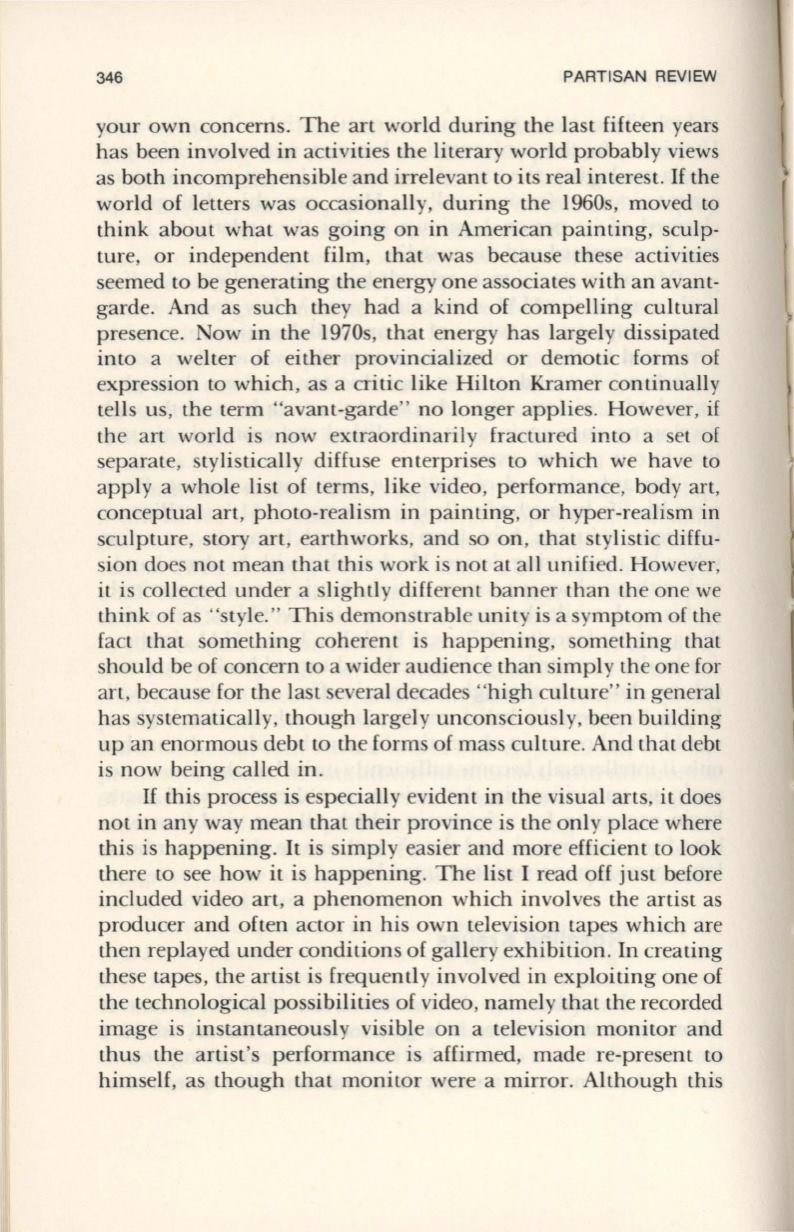
346
PARTISAN REVIEW
your own concerns. The art world during the last fifteen years
has been involved in activities the literary world probably views
as both incomprehensible and irrelevant to its real interest.
If
the
world of letters was occasionally, during the 1960s, moved to
think about what was going on in American painting, sculp–
ture, or independent film, that was because these activities
seemed to be generating the energy one associates with an avant–
garde. And as such they had a kind of compelling cultural
presence. Now in the 1970s, that energy has largely dissipated
into a welter of either provincialized or demotic forms of
expression to which, as a critic like Hilton Kramer continually
tells us, the term "avant-garde" no longer applies. However, if
the art world is now extraordinarily fractured into a set of
separate, stylistically diffuse enterprises to which we have to
apply a whole list of terms, like video, performance, body art,
conceptual art, photo-realism in painting, or hyper-realism in
sculpture, story art, earthworks, and so on, that stylistic diffu–
sion does not mean that this work is not at all unified. However,
it is collected under a slightly different banner than the one we
think of as "style." This demonstrable unity is a symptom of the
fact that something coherent is happening, something that
should be of concern to a wider audience than simply the one for
art, because for the last several decades "high culture" in general
has systematically, though largely unconsciously, been building
up an enormous debt to the forms of mass culture. And that debt
is now being called in.
If
this process is especially evident in the visual arts, it does
not in any way mean that their province is the only place where
this is happening.
It
is simply easier and more efficient to look
there to see how it is happening. The list I read off just before
included video art, a phenomenon which involves the artist as
producer and often actor in his own television tapes which are
then replayed under conditions of gallery exhibition. In creating
these tapes, the artist is frequently involved in exploiting one of
the technological possibilities of video, namely that the recorded
image is instantaneously visible on a television monitor and
thus the artist's performance is affirmed, made re-present to
himself, as though that monitor were a mirror. Although this
\


